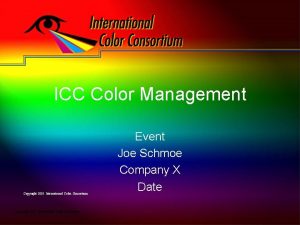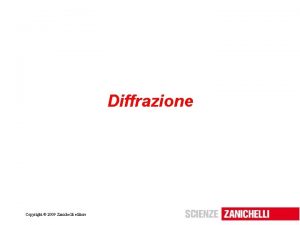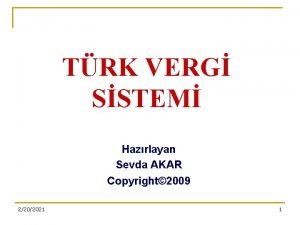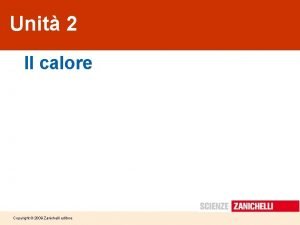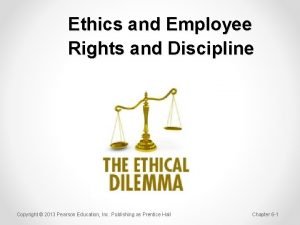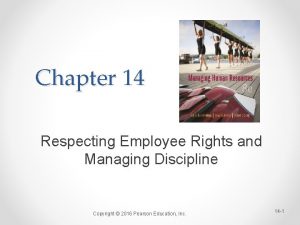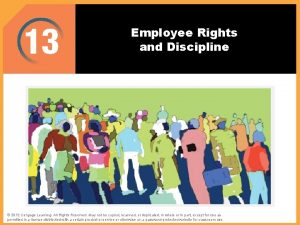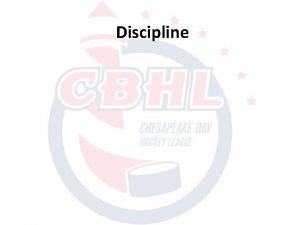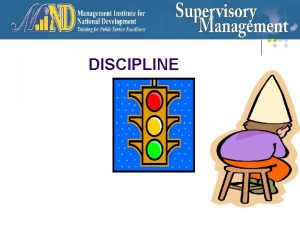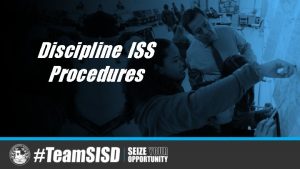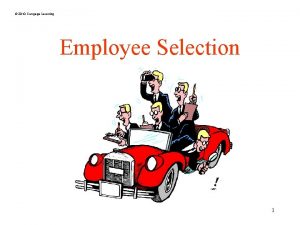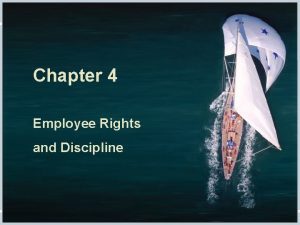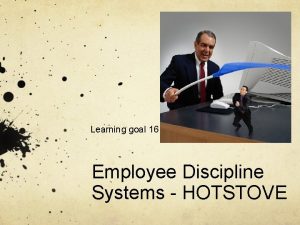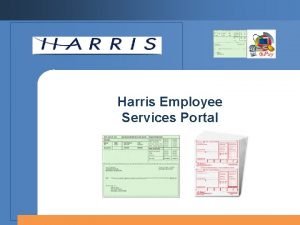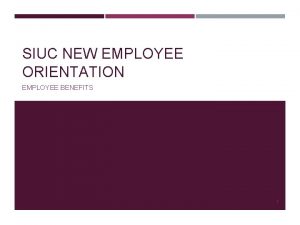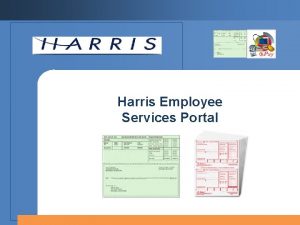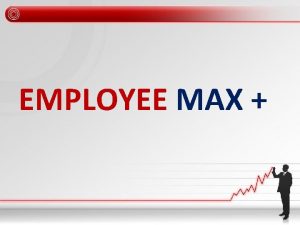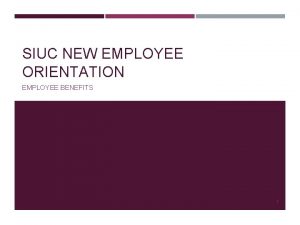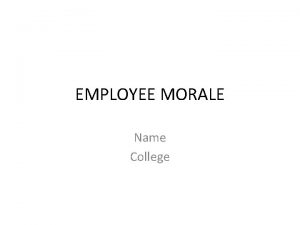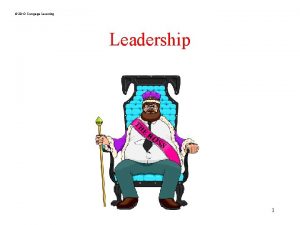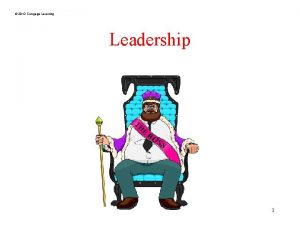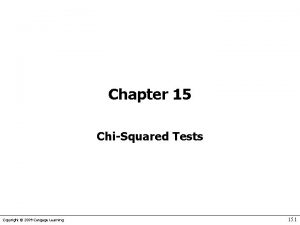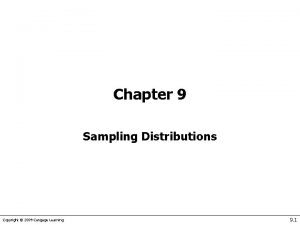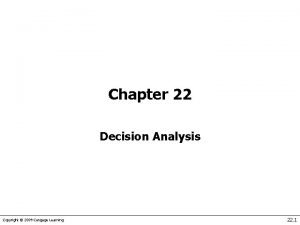Chapter 12 Employee Discipline Copyright 2009 Cengage Learning























- Slides: 23

Chapter 12 Employee Discipline Copyright © 2009 Cengage Learning. All rights reserved. Power. Point Presentation by Charlie Cook The University of West Alabama

The Changing Significance of Industrial Discipline • Historical Overview of Employer Discipline Ø 18 th and 19 th centuries v Management’s uncontrolled discretion (employment-at-will) over employees allowed for the imposition of harsh discipline. Ø 20 th century v Scientific management (Frederick Taylor) focused on improving the performance of employees through proper treatment. v The Wagner (National Labor Relations) Act of 1935 mandated nondiscriminatory treatment of employees and created the NLRB to enforce the act. © 2008 Cengage Learning. All rights reserved. 2

Arbitrators and Discipline • Powers of Arbitrators in Decisions Regarding Discipline Ø To determine what constitutes “just cause” for discipline Ø To establish “standards of proof and evidence” Ø To review and modify or eliminate the penalty imposed by management when warranted © 2008 Cengage Learning. All rights reserved. 3

The Employment-at-Will Doctrine • Employment-at-Will Defined Ø Either party in the work relationship can sever the relationship at any time for any or no reason. • Employment-at-Will Exceptions Ø Public policy v Wrongfully discharging an employee for exercising a right under the law, or for refusing to violate a federal, state or local law at the direction of the employer. Ø Implied contract v Wrongfully discharging an employee after entering into oral contract that implies job security or other treatment. © 2008 Cengage Learning. All rights reserved. 4

The Employment-at-Will Doctrine (cont’d) • Employment-at-Will Exceptions (cont’d) Ø Covenant-of-Good Faith and Fair Dealing v Wrongfully discharging an employee without “just cause” or as an unjust act in bad faith and with malice. © 2008 Cengage Learning. All rights reserved. 5

Present-Day Significance of Discipline • Arbitrators’ Options in Discharge Cases Ø Uphold management’s decision to discharge the employee. Ø Reinstate the employee with some or all back pay. • Effects of an Arbitrator’s Reinstatement Decision Ø Financial loss for back wages Ø Loss of authority over the reinstated employee Ø Failure of the reinstated employee to perform well Ø Loss of faith in upper management support by line supervisors © 2008 Cengage Learning. All rights reserved. 6

Elements of the Just Cause Principle • Criteria for “Just Cause” Discipline Ø There is clear and convincing evidence that the grievant committed a disciplinary offense. Ø Disciplinary action taken was appropriate for the offense committed. Ø Discipline was not arbitrary or discriminatory and similar in nature to discipline in similar circumstances. © 2008 Cengage Learning. All rights reserved. 7

Legitimate Purposes of Discipline improves efficiency by: Setting an example of appropriate behavior. Transmitting the rules of the organization. Promoting efficient production. Maintaining respect for the supervisor. Correcting employee behavior. © 2008 Cengage Learning. All rights reserved. 8

Exhibit 12. 2 Seven Tests for ‘‘Just Cause’’ Employee Terminations 1. Due notice 2. Reasonable rule or order • If all tests at left are answered “Yes”, then make two additional considerations for: 3. Investigation Ø Due process violations 4. Fair investigation Ø Mitigating circumstances 5. Proof 6. Equal treatment 7. Penalty SOURCE: Adapted from Enterprise Wire Co. and Enterprise Independent Union, 46 LA 359, 1996 (Carroll R. Daugherty). Also see Adolph M. Koven and Susan L. Smith, Just Cause: The Seven Tests, revised by Donald F. Farwell (Washington, D. C. : Bureau of National Affairs, 1992); Jack Dunsford, ‘‘Arbitral Discretion: The Tests for Just Cause, ’’ Proceedings of the 42 nd Annual Meeting of the National Academy of Arbitrators (Washington, D. C. : Bureau of National Affairs); also see Adolph M. Koven and Susan Smith, Just Cause: The Seven Tests, Third Edition by Kenneth May, Washington, D. C. : Bureau of National Affairs, Inc. , 2006. © 2008 Cengage Learning. All rights reserved. 9

Degree of Proof in Disciplinary Cases • Level of Proof Used by Arbitrators Ø Preponderance of evidence v Testimony and evidence outweighs opposing presumptions and evidence. Ø Clear and convincing evidence v Truth of the asserted facts is highly probable. Ø Beyond a reasonable doubt v No alternative interpretation of the facts is probably sufficient. © 2008 Cengage Learning. All rights reserved. 10

Effect of Work Rules on Discipline • Requirements for Work Rules Ø Reasonable in application v Necessary to orderly, safe, efficient operation of the business Ø Clearly stated v Provides an understandable expectation of behavior Ø States the consequences of violation of the rule v Informs employees of disciplinary action that will be taken if the rule is broken Ø Consistent application of the rule v Rule is applied to all employees fairly and in as reasonably similar fashion as circumstances permit. © 2008 Cengage Learning. All rights reserved. 11

Effect of Work Rules on Discipline (cont’d) • Progressive Discipline Ø The application of increasing severe penalties for repeated identical offenses depending on the statute of limitations for offenses. v Emphasizes the seriousness of repeated rule infractions. v Furnishes additional chances for the employee to adopt the correct behavior before discharge. Ø Disciplinary Steps v Oral warning > Written warning > Suspension > Discharge © 2008 Cengage Learning. All rights reserved. 12

Exhibit 12. 3 Table of Penalties SOURCE: Taken as examples from various company rules and collective bargaining agreements. © 2008 Cengage Learning. All rights reserved. 13

Effect of Work Rules on Discipline (cont’d) • Last Chance Agreements Ø A negotiated written agreement that requires an employee’s future compliance with work behavior standards to avoid dismissal (generally, for poor past performance). Ø Agreement terms require an arbitrator to consider only the validity of the agreement and whether its terms were violated if a discharge due to application of the agreement is appealed to arbitration. © 2008 Cengage Learning. All rights reserved. 14

Arbitrators’ Consideration of Disciplinary Penalties • Circumstances Mitigating Penalties Ø Management culpability v In contributing to a problem, management assumes a liability for the wrongdoing. Ø Singular event v The circumstances of the case make it unlikely to occur again if management employs correction rather than discharge. Ø Troubled employee v Personal factors overwhelmed the employee, leading to the disciplinary event. The employee will likely cease the behavior and return to normal service. © 2008 Cengage Learning. All rights reserved. 15

Application of the Just Cause Standard • Factors Causing Arbitrators to Reverse or Modify Disciplinary Actions Ø Failure to conduct a full and fair investigation of the employee’s misconduct Ø Failure to consider mitigating circumstances Ø Engaging in arbitrary, capricious, discriminatory, or disparate treatment in determining discipline Ø Improper administration of the employer’s rules and requirements © 2008 Cengage Learning. All rights reserved. 16

Due Process and the Weingarten Decision • Due Process Ø Substantive due process focuses on the purpose or rationale for a work rule Ø Procedural due process is usually contained in the labor agreement and includes: v Specific time limits for the disciplinary process v. A provision for union representation (compliance with the Weingarten decision) and an employee defense response when discipline is administered v. A requirement that the employee be notified of the specific offense in writing. © 2008 Cengage Learning. All rights reserved. 17

Exhibit 12. 5 Application of Weingarten Rights 1. The employee’s right stems from Section 7 of the National Labor Relations Act, which allows the employee to engage in concerted activities for mutual aid and protection. 2. The right can be exercised only if the employee chooses to request representation; the employer is not obligated to inform the employee of his or her legal right to union representation. 3. The employee must reasonably believe that disciplinary action could follow before requesting the presence of a union representative. 4. If the employee refuses to go through the interview, the request for representation having been denied, the employer may continue the investigation without the input of the employee. 5. The employer is not obligated to bargain with the employee’s union representative during the interview. SOURCE: Neal Orkin and Miriam Heise, ‘‘Weingarten through the Looking Glass, ’’ Labor Law Journal 48 (March 1997), pp. 157– 159. © 1994, 1997, & 2000, CCH Incorporated. All Rights Reserved. Reprinted with permission from Labor Law Journal. © 2008 Cengage Learning. All rights reserved. 18

Exhibit 12. 5 Application of Weingarten Rights (cont’d) 6. If the employer denies the employee his or her right to union representation after the employee makes a legitimate request and continues the investigatory interview, the interview is considered an illegal interview and any information gained by the employer, even a confession to a misdeed such as theft, will not be allowed in a subsequent procedure, such as arbitration. Not to be confused, such rulings do not prove that the employee is innocent of the alleged crime; simply, the employer must prove the employee’s guilt by some other means. For example, another employee may be willing to come forward as a witness to the employee’s theft. 7. Weingarten rights do not apply if management had already decided to impose discipline and the purpose of the meeting is to communicate the disciplinary decision. SOURCE: Neal Orkin and Miriam Heise, ‘‘Weingarten through the Looking Glass, ’’ Labor Law Journal 48 (March 1997), pp. 157– 159. © 1994, 1997, & 2000, CCH Incorporated. All Rights Reserved. Reprinted with permission from Labor Law Journal. © 2008 Cengage Learning. All rights reserved. 19

Exhibit 12. 6 The Weingarten Card: Don’t Leave Home without It! © 2008 Cengage Learning. All rights reserved. 20

Exhibit 12. 8 Evolving NLRB Policy on Employee Weingarten Rights 1975—The U. S. Supreme Court held that a unionized employee has the right to union representation at an investigatory interview when the employee reasonably believes that the investigatory interview could lead to disciplinary action. NLRB v. J. Weingarten, Inc. , 420 U. S. 251. 1982—The Board held that nonunion employees had Weingarten rights because Section 7 of the National Labor Relations Act gives employees the right to engage in protected concerted activities for mutual aid and protection. Materials Research Corp. , 262 NLRB 1010. 1985—The Board reversed itself and held that nonunion employees did not have Weingarten rights because such rights stem from the unions right to represent employees and Weingarten rights extend to employees only when there is an exclusive bargaining representative (union). Sears Roebuck & Co. , 274 NLRB 230. 1985—Weingarten rights are not applicable to nonunion settings. E. I. Du. Pont De Neumours & Co. , 289 NLRB 627 (Du. Pont III). 2000 -2001—The Board reversed itself again and held that nonunion employees had Weingarten rights. Employees are afforded the right to have a co-worker present at an investigatory interview when the employee reasonably believes the investigatory interview could lead to disciplinary action. Epilepsy Foundation of Northeast Ohio v. NLRB, 331 NLRB 92, upheld by the U. S. Circuit Court of Appeals, No. 00 -1332 (November 2, 2001) 2001 U. S. App. LEXIS 23722 (D. C. Cir. 2001). 2004—For the fourth time, the NLRB changed its position. In IBM Corp. , 341 NLRB 148 (June 9, 2004), the Board ruled that rights afforded to unionized workers by the U. S. Supreme Court’s decision in NLRB v. J. Weingarten, Inc. , 420 U. S. 251 (1975) are not extended to nonunion employees. SOURCE: Michael J. Soltis and Alexandra M. Gross, ‘‘Weingarten Redux: An Employer’s Manual, ’’ Labor Law Journal, 51 (Winter 2000), pp. 179– 180; James F. Morgan, James M. Owens, and Glenn M. Gomes, ‘‘Union Rules Intrude Upon the Nonunion Domain: Workplace Investigations and the NLRB, ’’ Employee Responsibilities and Rights Journal, 14 (March 2002), p. 36; ‘‘Weingarten Rights, Labor Law & Due Process, ’’ Center for Labor Relations and Research, Pearl City, Hawaii, University of Hawaii, West Oahu, http: //www. homepages. uhwo. hawaii. edu/clear/wein. html, pp. 1– 2. © 2008 Cengage Learning. All rights reserved. 21

Arbitrators and Due Process Irregularities • Alternative Positions for Arbitrators when Faced with Due Process Irregularities Ø To nullify the whole action when management fails to maintain strict compliance with procedural requirements. Ø To disregard procedural noncompliance unless the employee can show he was prejudiced by it. Ø To penalize procedural failure but not to render management’s action null and void. © 2008 Cengage Learning. All rights reserved. 22

Key Terms • • • Wrongfully discharged Just cause Preponderance of evidence • Clear and convincing evidence • Beyond a reasonable doubt • Price list © 2008 Cengage Learning. All rights reserved. • • Progressive discipline Oral warning Written warning Suspension Discharge Last chance agreement Mitigating circumstances Due process 23
 2009 delmar cengage learning
2009 delmar cengage learning 2009 delmar cengage learning
2009 delmar cengage learning Clinical conditions chapter 1 medical terminology
Clinical conditions chapter 1 medical terminology Graphing tpr
Graphing tpr Chapter 6 the skeletal system answer key
Chapter 6 the skeletal system answer key Chapter 13 medical math assignment sheet
Chapter 13 medical math assignment sheet Chapter 10 cultural diversity
Chapter 10 cultural diversity Cengage chapter 7
Cengage chapter 7 Cengage learning chapter 7 answers
Cengage learning chapter 7 answers Copyright 2009
Copyright 2009 International color standards
International color standards Dell all rights reserved copyright 2009
Dell all rights reserved copyright 2009 Copyright 2009 pearson education inc
Copyright 2009 pearson education inc Reticolo di diffrazione zanichelli
Reticolo di diffrazione zanichelli Copyright 2009
Copyright 2009 Capacità termica e calore specifico zanichelli
Capacità termica e calore specifico zanichelli Copyright 2009 pearson education inc
Copyright 2009 pearson education inc Copyright 2009 pearson education inc
Copyright 2009 pearson education inc 2009 pearson education inc
2009 pearson education inc 2009 pearson education inc
2009 pearson education inc Ethics and employee rights and discipline
Ethics and employee rights and discipline Frisk disciplinary
Frisk disciplinary Respecting employee rights and managing discipline
Respecting employee rights and managing discipline Ethics and employee rights and discipline
Ethics and employee rights and discipline










